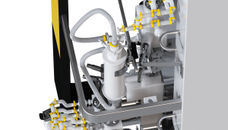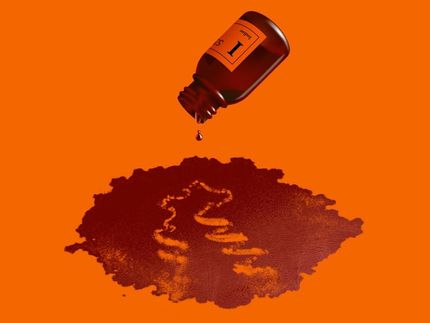Protein folding via charge zippers
Membrane proteins are the “molecular machines” in biological cell envelopes. They control diverse processes, such as the transport of molecules across the lipid membrane, signal transduction, and photosynthesis. Their shape, i.e. folding of the molecules, plays a decisive role in the formation of, e.g., pores in the cell membrane. In the Cell magazine, researchers of Karlsruhe Institute of Technology and the University of Cagliari are now reporting a novel charge zipper principle used by proteins to form functional units.
“It is fascinating to see the elegant basic principles that are used by nature to construct molecular assemblies,” explains Anne Ulrich, Director of the KIT Institute for Biological Interfaces. “A charge zipper between the charged side chains is an entirely unexpected mechanism used by membrane proteins to neutralize their charges such that they can be immersed into hydrophobic cell membranes.”
In a current study, Ulrich and her team investigate the so-called Twin-arginine translocase (Tat) that is used in the cell membrane of bacteria as an export machinery for folded proteins. Several TatA subunits assemble as a pore that can adapt its diameter to the size of the cargo to be transported. “But how can such a pore be built up from TatA proteins? How can they reversibly form a huge hole in the membrane for a variety of molecules to pass through, but without causing leakage of the cell?”, Ulrich formulates the questions studied.
To answer these questions, the researchers studied the molecular structure of TatA protein from the bacterium B. subtilis, which consists of a chain of 70 amino acids. The analysis showed that it folds into a rather rigid, rod-shaped helix that is followed by a flexible, extended stretch. Many amino acids in the helix and the adjacent stretch carry positive or negative charges. Surprisingly, the sequence of charges on the helix is complementary to those in the adjacent stretch of the protein. When the protein is folded up at the connection point like a pocket knife, positive and negative charges will always meet and attract each other. Hence, the protein links up both of its segments, similar to the interlocking teeth of a zipper.
“The clou is that this binding principle also works with the neighboring proteins,” Ulrich says. Instead of folding up alone, every TatA protein also forms charge zippers with both of its neighbors. Computer simulations showed that this leads to stable and, at the same time, flexible connections between the adjacent molecules. In this way, any number of proteins can be linked together to form an uncharged ring, which thus lines the TatA pore in the hydrophobic membrane. This novel charge zipper principle does not only seem to play a role in protein transport, but also in the attack of certain antimicrobial peptides on bacteria, or in their formation of biofilms as a response to stress.
Other news from the department science
These products might interest you

Hydrosart® Ultrafilter by Sartorius
Efficient ultrafiltration for biotech and pharma
Maximum flow rates and minimum protein loss with Hydrosart® membranes

Hydrosart® Microfilter by Sartorius
Hydrophilic microfilters for bioprocesses
Minimal protein adsorption and high flow rates

Polyethersulfone Ultrafilter by Sartorius
Reliable filtration with PESU membranes
Perfect for biotechnology and pharmaceuticals, withstands sterilisation and high temperatures

Sartopore® Platinum by Sartorius
Efficient filtration with minimal protein adsorption
Reduces rinsing volume by 95 % and offers 1 m² filtration area per 10"

Sartobind® Rapid A by Sartorius
Efficient chromatography with disposable membranes
Increase productivity and reduce costs with fast cycle times

Polyethersulfone Microfilter by Sartorius
Biotechnological filtration made easy
Highly stable 0.1 µm PESU membranes for maximum efficiency

Get the life science industry in your inbox
By submitting this form you agree that LUMITOS AG will send you the newsletter(s) selected above by email. Your data will not be passed on to third parties. Your data will be stored and processed in accordance with our data protection regulations. LUMITOS may contact you by email for the purpose of advertising or market and opinion surveys. You can revoke your consent at any time without giving reasons to LUMITOS AG, Ernst-Augustin-Str. 2, 12489 Berlin, Germany or by e-mail at revoke@lumitos.com with effect for the future. In addition, each email contains a link to unsubscribe from the corresponding newsletter.



















































